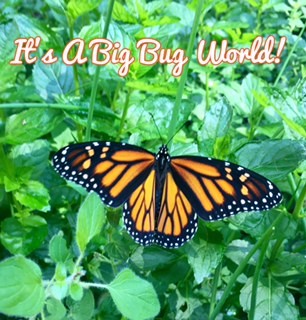
It’s fall, and lately I’ve been thinking a lot about…bugs! Has your home been invaded by stink bugs recently? Have you been seeing what seems like a lot of wasps acting frantic? Why is this happening? Why do we even need insects? The answer might surprise you. It’s actually a big bug world out there, but it’s pretty fascinating, too.
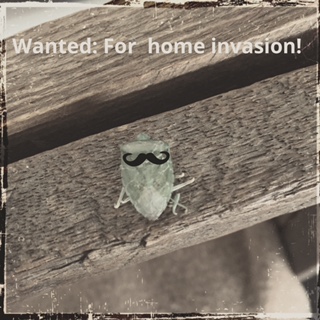
I’m active in my area’s Master Gardener program. (I recently became an Advanced Master Gardener). For months, I’ve been identifying, organizing, and preserving a large collection of bugs for the local Master Gardener office. The boxes will be used to help ID insects, and to help educate and present to the public on insects. Through local Garden clubs and the MGs, I recently had the privilege to present to two schools all about insects. To see how excited the kids were, how eager they were to learn all about insects, and to share the boxes I’ve worked so hard on made me very happy! Doing this project, I learned more about insects than I could have ever imagined! It’s really an amazing world – right in our own backyards.
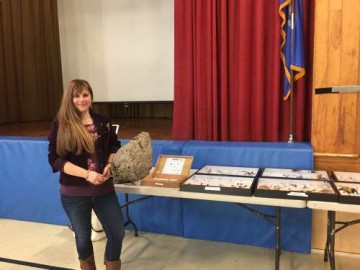
Did you know that 90% of all living creatures are insects? Scientists think that for every one pound of human, there are 300 pounds of insects out there! That’s a whole lotta BUGS! Even those I’ve feared (and often times loathed) serve an important part in our world. Not all are to be hated -many insects are beneficial to humans and to gardens.
Insects are an important source of food for many other garden creatures.
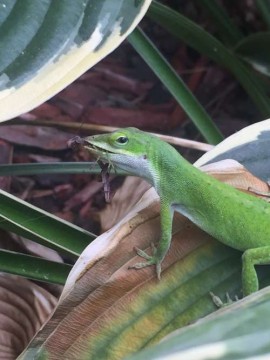
I took this photo of “snack time” from my mom’s porch in Georgia this summer.
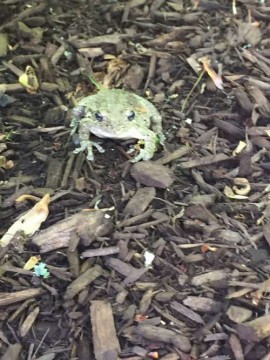
This little guy loved living in my garden all summer.
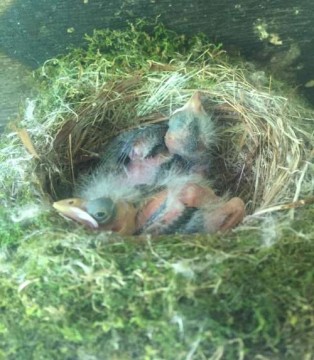
We watched the mama frequently feed her hungry brood of babies bugs this summer.
We need insects to pollinate our crops and gardens for food.
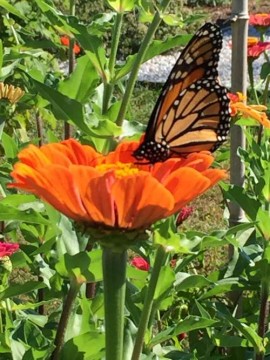
Adding color to our yards brings us joy as well as beneficials like this Monarch. Monarchs journey south for the winter!
Bees are especially good at pollinating. Living in hives, drone bees are the male bees that are responsible for mating with the queen bee. Worker bees are all female, and the only ones you’ll see outside a hive.
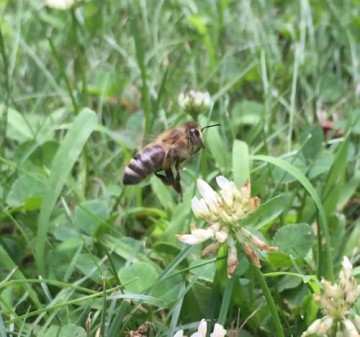
Those busy female worker bees build and protect the hive, and keep it clean and tidy (hmm… why does that sound familiar)? They also flap their wings to circulate stuffy inside hive air! In the time it takes to say “Mississippi”, a bee can flap her wings 200 times!
Bees give us honey and wax, but I’ve always wondered what purpose wasps serve. We had several large nests of wasps this year around our house, and I suffered some nasty stings. Female wasps are the only wasps that sting, and can do so over and over (bees only sting once). Penguins don’t have to deal with wasps, because the only place on Earth you won’t find these aggressive boogers is Antarctica!
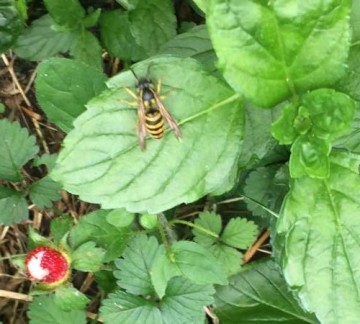
As we found this summer, their nests can go up quickly. Wasps make their homes from chewing up wood (Carpenter bees drilled into my brand new chicken coop this spring – arrrgh! Different insect, but this made me think of it). Wasps make a paper-like substance from the wood they chew to create their home.
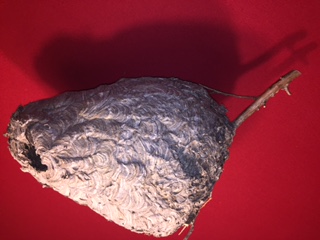
Can you imagine how many wasps would be in this size nest? {shudder}
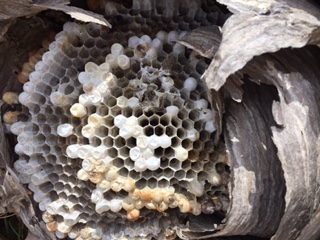
An inside view of a wasp nest
But why does it seem like wasps are everywhere we go in early fall? As I sit in my glamper blogging, a wasp has just landed on the window next to me.
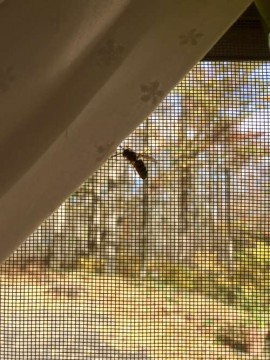
Hey I don’t remember inviting you in…
What is it about this time of year and wasps?!?
Fertile female wasps overwinter, waiting to emerge next year to create new nests and lay eggs. This year’s crop of workers that were tending the young all summer no longer have young mouths to feed, so now they’re busy trying to take care of themselves. They’re basically kicked out of the hive, and aren’t too happy. You’d be grumpy, too, if you were evicted, hungry and knew you were about to die! Although wasps are a nuisance to humans, they are predators (some are also parasitic) to many other pests that eat crops and cause bigger problems for humans.
Beetles are another group of insects I find fascinating. One in four insects is a beetle. Worldwide over 300,000 different kinds of beetles share our world; 12,000 varieties are found here in the USA.
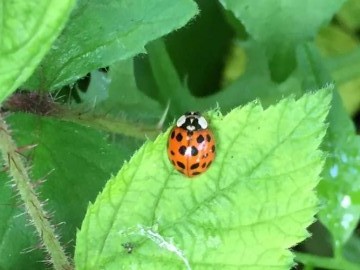
I find the sizes of beetles, ranging from flea-size to much larger, interesting, as well as the many colors and patterns. Though this Colorado potato beetle I found that made a meal of some of my plants, I think his stripes and coloring are neat looking.
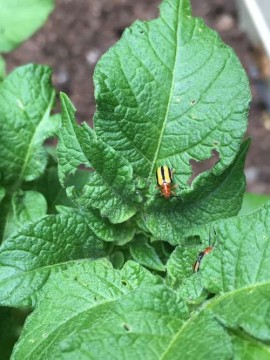
Not all beetles are bad, such as this beneficial and beautiful Six Spotted Tiger Beetle I found hiding in a pine cone.
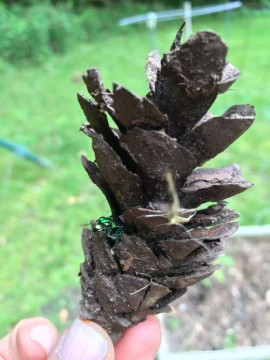
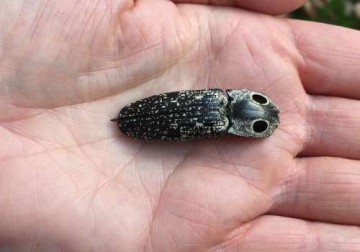
I admit, I did scream when this Eastern Click Eyed beetle landed in my hair this summer. (Harmless, the false eyes are alarming, but what cool factor this beetle has, like he’s wearing shades!)
And those green or brown stink bugs that are driving us all crazy by coming into our homes? They are just looking for a warm place to hunker down for the winter. Just be careful not to squish them when you “capture” them.
Until Next time…Farmgirl Hugs, Nicole






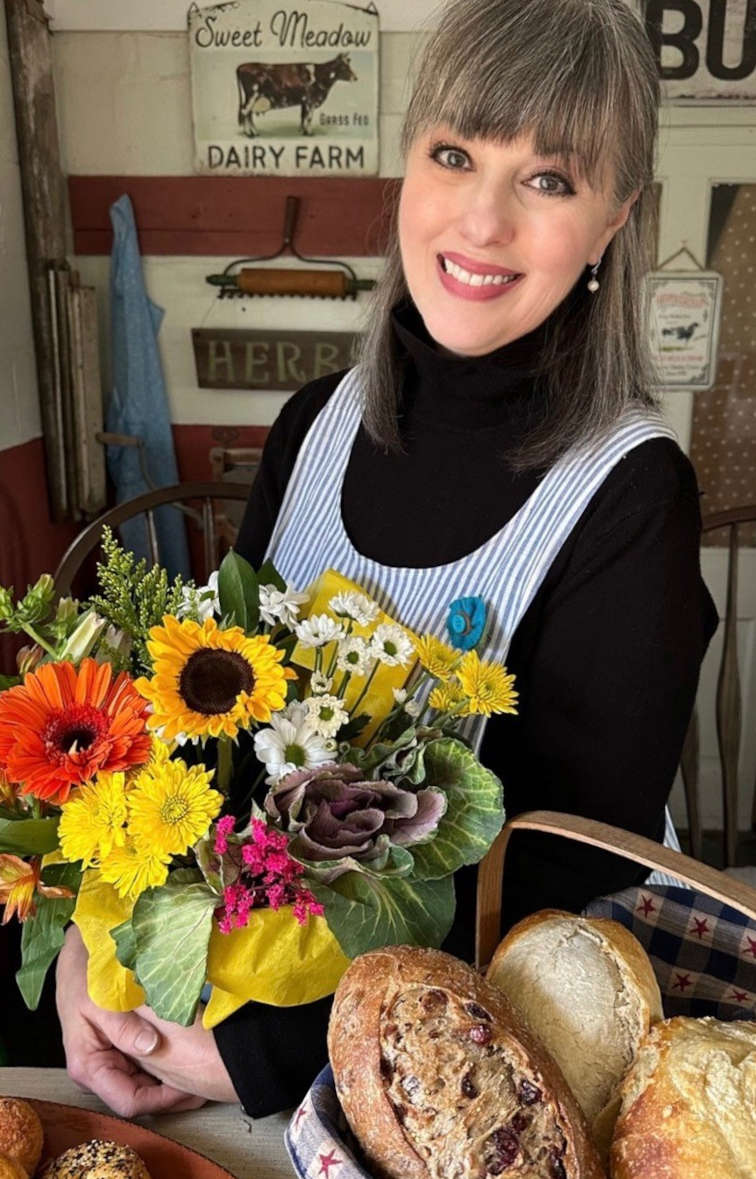




I was actually just wondering that about the wasps. I keep seeing them everywhere this year. It seems like we can’t open our back door without one sneaking in. About 2 weeks ago I ended up with 4 inside my house. They really make me worry because I’m afraid they will sting my boys or my dog who is actually highly allergic to them. (We dealt with a bee sting in the past with my dog and it was not pretty.) I am starting to think my new garden is what’s drawing them near my house.
I am not a big fan of bugs and I wasn’t awear of the amount that is really surrounding me, but I will continue to respect their job as a part of our world an let them take care of my garden!
Hi Krista! I hear ya on those wasps! We once had a dog who was allergic. I have a photo of her with her rear end all swollen up, welts through the fur, from an encounter when she tried to lay under a bench that wasps had made a nest under. I remember calling the vet as soon as it happened, and being told to give her Benadryl. I have always kept it in the house. The thing is, you never know when someone will have an allergic reaction to a bite that wasn’t allergic before. Have patience, soon the cold snaps will be here and the wasps gone. Until then, it is a worry! Hope my blog post didn’t scare you, because we really do need all those critters to keep things in balance. Farmgirl Hugs, Nicole
Hi Nicole,
We battle the Lady Asian Beetle here in the Spring. They are similar in looks to a Lady Bug but absolutely NOT the same insect at all. I’ve done a study on them because they are so invasive that it is like a plague for about a month in early spring. This year we have had them in the Fall too. I think because it got very cold and we had a few freezing days and then warmed up to the high 70’s so the beetles must’ve thought it was spring and they came out in full force. It is hard to explain how severe they are. You basically can’t go outside without hundreds upon hundreds coming in the house. And literally there were millions on my porches.
I’m really tolerant of all things insect and actually love them. And a true Lady Bug? I will go to extreme lengths to save her. But these Lady Asian Beetles are horrid! 🙂
Happy Fall to you Nicole!
Hugs,
Dori, the Ranch Farmgirl!
Hi Dori, Yes, we have them here, too. They are not yet officially listed as invasive here in CT yet. (Keyword Yet). Unfortunately what happens is they multiply to where they take out the native species which is happening with these Asian forms of Lady Beetle.
There is a phenomena in Denmark that I experienced first hand one year. Swarms do not explain it well enough. Blankets of ladybugs invaded Denmark. We were in Jutland walking on the beach behind my in-laws’ home, and the beach sand where the tide had gone down was solid RED. It was literally a carpet, several inches thick, of ladybugs. Our feet crunched as we walked. It was gross.
SO, just like with anything else, too much of anything isn’t good! We are still having the nasty stink bug invasion. 🙁
Farmgirl Hugs, Nicole
Thank you for such a lovely educational piece on our world of insects. One of my favorites to run across is the Rhinoceros Beetle. You can see why they get their name
Hi Binky, I looked them up and those ARE very cool! Thanks so much for reading and sharing. Farmgirl Hugs, Nicole
Japanese beetles are beautiful but they destroyed our grape vines this year so I guess their beauty is only skin deep.
Hi Marlene, Yes! I have had to battle them a great deal. This year was a piece of cake, and I will tell you why. First off, the worst thing I was doing was using those “bait bags”. They do draw the beetles with their pheromones, but they actually can draw MORE Japanese beetles to your garden than you would have without the bait. Thus, you buy more bait traps, and so on. Hand picking and putting the beetles in to a soapy bit of water is the best. My chickens eat the grubs, as well, but my chickens are not free ranging throughout my yard. Just omitting the bait traps and hand picking them the last two years resulted in success. I hardly had any Japanese beetles this year following those practices. Hope that helps! Farmgirl Hugs, Nicole
Really interesting blog. Great pictures.
Thank you! Glad you enjoyed this post. ~Nicole
I love the pictures, too, Nicole. I am impressed with the boxes you made with all the bugs to exhibit. Very interesting things I did not know about insects and that they make up 90 percent of all living. I did not know about picture you took on my porch of the lizard.
Love, Mother
Hi Mom! I loved all the lizards on your porch! Glad you liked the post. Love you, Nicole
This Suburban Farm Girl and Advanced Master Gardener is a tremendous example of a lifelong learner! Her curiosity and sparkle deserves national attention as an example for the youth of America! Don Ramsey, Resident of Newtown, CT
Thank you so very much, Don. I am honored to have you say such nice things about me, I hold you in such high regard! `Nicole
We have many wasps on our 1 acre farm every year, but unless their nests are extremely close to the entry ways of our house, or in the direct line of a walking path, I won’t kill or do away with them. When our kids were younger, we learned through their 4-H Entomology Projects that wasps are VERY beneficial in the natural world. They are a tremendous predator of small caterpillars on cabbage, broccoli, and greens, in our garden.
This summer, every time I watered my potted petunias, I was able to watch wasps very busily checking for the little caterpillars that usually do a lot of damage to the flowers. They sting the caterpillars and stuff them in the paper or mud cells for the hatching wasp young to eat. We have a blue/black wasp that digs it’s home underground and carries small spiders (also beneficial) into it. Another wasp burrows into our compost piles. These used to sting and bother our kid’s 4-H pigs. Some wasps also serve as pollinators. We all learned a great deal through our years in entomology, and still use the information daily.
Me in Idaho
Hi Michelle, Kudos to you for not disturbing beneficials! There are also parasitic wasps that lay eggs inside catapillars. When people spray to kill everything, they sometimes end up with worse problems from the bad bugs multiplying. I love that you had your kids in 4H, my daughter was in 4H for many years, too! Thanks for reading and commenting, and for sharing such great insight on beneficials. Farmgirl Hugs, Nicole